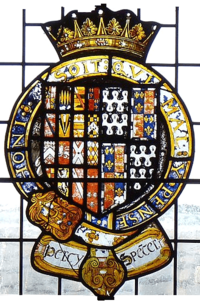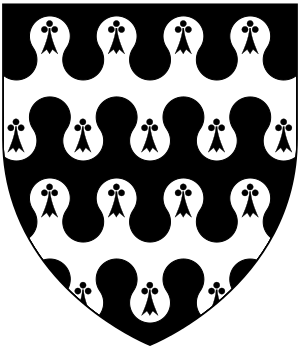Robert Spencer of Spencer Combe facts for kids
Sir Robert Spencer (who passed away before 1510) lived in a place called Spencer Combe in Crediton, Devon, England. He was married to Eleanor Beaufort (1431–1501). Eleanor was the daughter of a very important person, Edmund Beaufort, 2nd Duke of Somerset (1406–1455), who was also a Knight of the Garter. Sir Robert and Eleanor had two daughters. These daughters later married into important families, which made their own families quite famous.
Contents
Who Was Sir Robert Spencer?
It's a bit unclear where Sir Robert Spencer's family came from. Some historians, like Tristram Risdon (who died in 1640), believed he was the owner of the Spencer Combe estate. They thought his ancestor, Richard Spencer, got the land by marrying Alice Hody. Her family had inherited it from the Lancells family.
However, another historian, Sir William Pole (who died in 1635), didn't mention Sir Robert owning Spencer Combe. He thought the estate went to the Giffard family through an heiress named Jone Spencer. Even with these different ideas, it's generally believed that Sir Robert came from Spencer Combe.
An American family history expert, Douglas Richardson, suggested that Sir Robert Spencer was actually the son of John Spencer. This John Spencer was a Member of Parliament for Dorset. He owned land in Frampton (Dorset), Ashbury (Devon), and Brompton Ralph (Somerset).
What Did Sir Robert Spencer Do?
We don't know much about Sir Robert Spencer's life or work. Historian Risdon mentioned that he was a "Captain of the castle of Homet and Thomeline in Normandy." This means he was likely a military leader in France.
Because his wife, Eleanor, inherited land in Hazelbury Bryan in Dorset, Sir Robert was involved in local church matters there. He helped choose the new rectors (church leaders) in 1493 and 1496.
Where Did Sir Robert Spencer Live?
Sir Robert Spencer owned several estates because of his wife's inheritance. These lands were part of her "dower," which means property she received for her support after marriage. He held lands in:
- Chilton Foliat, Wiltshire (where he wrote his will)
- Hazelbury Bryan, Dorset
- Puncknowle, Dorset
- Toller Porcorum, Dorset
- Batheaston, Somerset
- Kingsdon, Somerset
- Shockerwick, Somerset
- Somerton Erleigh (in Somerton), Somerset
- Somerton Randolph (in Somerton), Somerset
Sir Robert's Family

Around 1465, Sir Robert Spencer married Eleanor Beaufort (1431–1501). This was Eleanor's second marriage. Her first husband was James Butler, 5th Earl of Ormond. Eleanor was the daughter of Edmund Beaufort, 2nd Duke of Somerset, a very important noble. Edmund was a grandson of John of Gaunt, who was a son of King Edward III. Eleanor's brothers also became Dukes of Somerset.
Sir Robert and Eleanor had two daughters who became very important:
- Margaret Spencer (1472–1536): She married Thomas Cary of Chilton Foliat. They had two sons:
- Sir John Cary (1491–1552): He was the older son and an ancestor of the Cary Viscounts Falkland.
- William Cary: He was the younger son. He married Mary Boleyn, who was the sister of Queen Anne Boleyn. William's descendants include the Cary Barons Hunsdon and other noble families.
- Katherine Spencer (1477–1542): She married Henry Percy, 5th Earl of Northumberland (1477–1527), who was also a Knight of the Garter. They had a son named Henry Percy, 6th Earl of Northumberland.
When Did Sir Robert Spencer Die?
Sir Robert Spencer died sometime before 1510. His will, which is a legal document about his wishes for his property, was approved on April 12, 1510.
Family Symbols (Heraldry)
The family symbol (coat of arms) for "Spencer of Spencer Combe" is seen in the Percy Window at Petworth House. It is also used by the Cary Viscounts Falkland. This symbol is described as: Sable, two bars nebuly ermine. This means a black shield with two wavy white stripes that have black spots (like ermine fur).
However, Sir William Pole described the Spencer of Spencer Combe arms differently. He said they were: Argent, on a bend sable two pairs of keys or. This means a silver shield with a black diagonal band, on which there are two pairs of gold keys.


